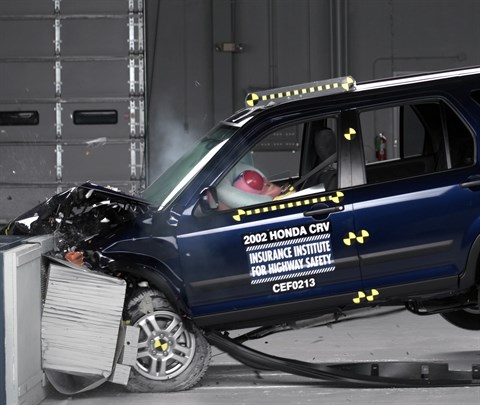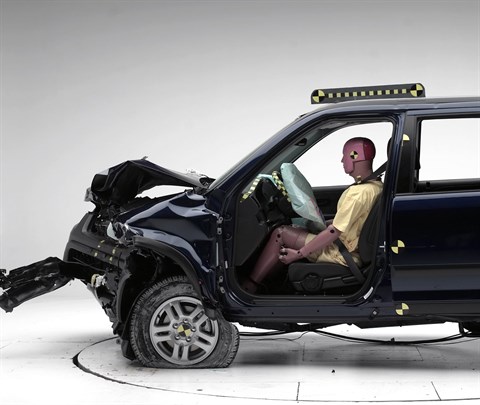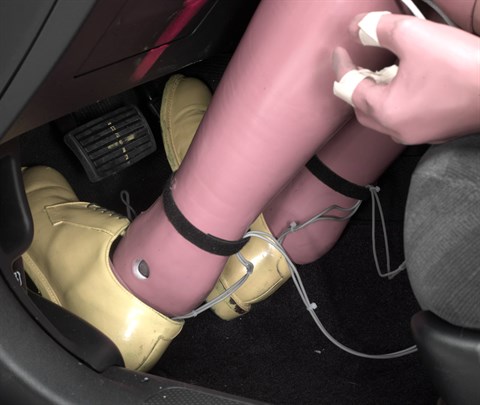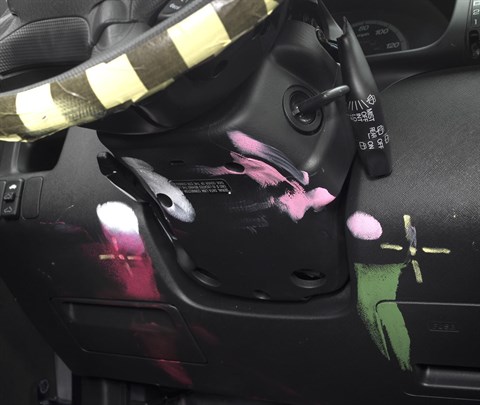Moderate overlap front: original test
Tested vehicle: 2002 Honda CR-V EX 4-door 4wd
Rating applies to 2002-06 models
The Honda CR-V was redesigned for the 2002 model year.
| Evaluation criteria | Rating |
|---|---|
| Overall evaluation | |
| Structure and safety cage | |
| Driver injury measures | |
| Head/neck | |
| Chest | |
| Leg/foot, left | |
| Leg/foot, right | |
| Driver restraints and dummy kinematics | |

Action shot taken during the frontal offset crash test.

The dummy's position in relation to the steering wheel and instrument panel after the crash test indicates that the driver's survival space was maintained well.

Intrusion into the driver's space was minimal, and all leg and foot measures indicated low risk of injury.

Smeared greasepaint indicates where the dummy's knees and shins hit the knee bolster and steering column.
Side: original test
Tested vehicle: 2003 Honda CR-V LX 4-door 4wd without optional side airbags
Rating applies to 2002-04 models
The Honda CR-V was redesigned for the 2002 model year. Front and rear head curtain airbags and front seat-mounted torso airbags became standard beginning with 2005 models.
When side airbags are optional, as in this vehicle when it was tested, the Institute conducts the test without this option. If a manufacturer offering optional side airbags requests the Institute to conduct an additional test of a vehicle with this option and agrees to reimburse the cost of the vehicle, a second test is conducted. Honda did not request such a test.
| Evaluation criteria | Rating |
|---|---|
| Overall evaluation | |
| Structure and safety cage | |
| Driver injury measures | |
| Head/neck | |
| Torso | |
| Pelvis/leg | |
| Driver head protection The dummy's head was hit by the window sill of the driver door. This impact did not produce high injury measures, but the head protection is inadequate. | |
| Rear passenger injury measures | |
| Head/neck | |
| Torso | |
| Pelvis/leg | |
| Rear passenger head protection The dummy's head was hit by the pillar behind the rear passenger door. This pillar is required by federal standard to provide some protection for occupants' heads. | |

View of the vehicle and barrier just after the crash test.

View of the vehicle after the crash with doors removed, showing damage to the occupant compartment.

Action shot taken during the side impact crash test showing the driver dummy's head hitting the window sill.

Smeared greasepaint shows where the rear passenger dummy's head was hit by the pillar behind the rear passenger door.
